In Spring and Summer, you often hear people complaining and desperate to remove weeds and neaten up their gardens and public spaces as soon as anything pops up.
However, we mustn’t rush to remove these valuable and native plants. Often, what is perceived as simply ‘weeds’ are a vital part of the UK ecology and provide shelter and food for 1000s of insects, birds, amphibians and larger mammals.
A shift in perception is needed to see what is messy, is natural, beautiful and helpful.
A weed is just a plant that popped up when you didn’t plan for it.
I just did a quick walkthrough in my garden. The weeds I spotted there include; wood violet, white clover, foxglove, ivy, bramble, redshank, nettle, creeping buttercup, daisy, poppy, oxalis, herb robert, buddleia, dandelion, docks. There are way more too! But I’m not sure what they are just yet.
The only one I’m not getting on with at the moment is common mallow, as it’s spreading rust to a hollyhock nearby. However, they are beautiful in bloom.
I didn’t plan any of these, and although present, they are relatively well managed through pruning and pulling up where they’re not suitable. If I left the ivy and bramble to it entirely, you wouldn’t be able to enter the garden! But that doesn’t mean I need to eradicate them.
Here are my top 10 weeds, and why we love them, where they pop up, what to know about spreading, management, and their benefits.
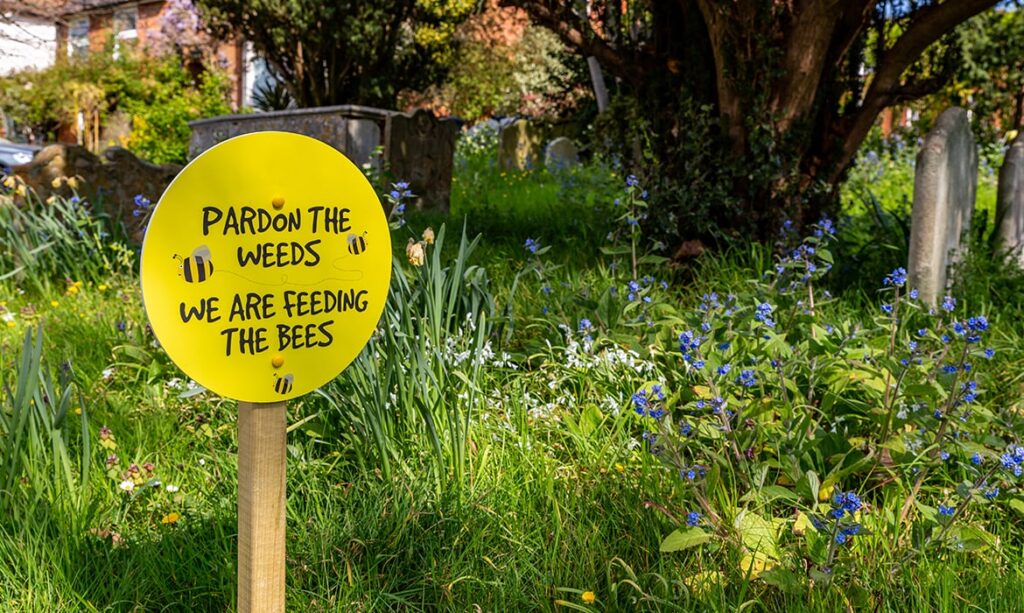
Brambles (Rubus fruticosus)
You’ll find brambles in all kinds of woods, hedgerows and neglected looking corners; they’ve very common in the UK.
They are one people moan about for looking messy. Still, about 240 species of insects feed on bramble, including many pollinators, butterflies, bees and moths, with 32 of these insects rely exclusively on them.
It’s also important for birds. for example, song thrush and wren use them for nesting, providing excellent cover and protection.
And we all love a blackberry, but so do the birds too! The berries provide an essential food source for birds and mammals like wood mice, doormouse, badgers, and foxes.
And deer love to eat the shoots and leaves (which can actually help maintain them)
When left entirely, they can be invasive and block light – not ideal for a garden. But when managed a little, they provide much-needed food and shelter for wildlife. If you want to prune, prune old canes after they fruit. You can be pretty vigorous with pruning if you need!
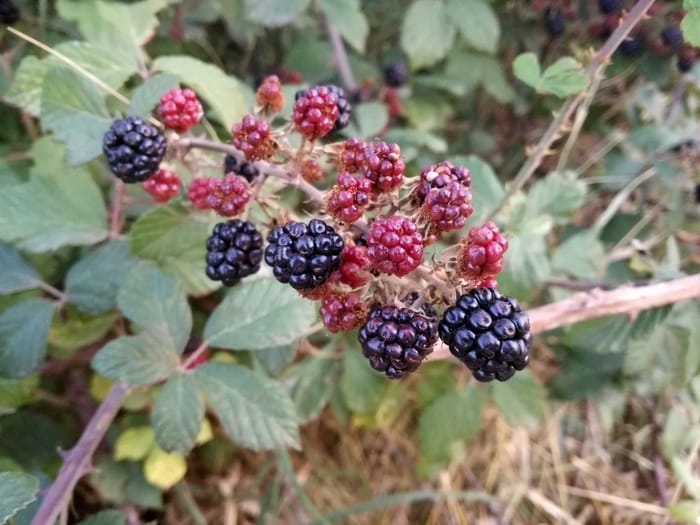
Nettles (Urtica dioica)
Nettles definitely get a bad reputation by the public in the UK, but they are vital for wildlife here, and they support over 40 different species of insect. They’re a primary food source for butterflies, including comma, tortoiseshell and peacock.
Aphids often shelter on nettles, so growing them provides early food for ladybirds and other aphids lovers, and so it may also protect your other plants for aphids. Ladybirds also prefer to lay eggs on nettles more than most plants,
Their seeds provide food for many varieties of birds, including chaffinches, house sparrows and bullfinches. And frogs, toads and newts love the leaves all year round.
If you have nettles that you’d like to keep, you can keep control of them by trimming and pulling up new unwanted shoots.

Dandelions (Taraxacum)
Dandelions are one of the first weeds to flower here in England, bringing a sea of yellow. Dandelions are not only a welcome sight that spring is on its way, but these flowers also provide the first foods in spring, providing nectar for all kinds of pollinators.
Butterflies and hoverflies like them too, and goldfinches feed on the seeds.
Ali loves dandelions so much she wrote a whole blog post on them!
If you want to control them, pick them before they turn into a dandelion clock and spreading the seeds.
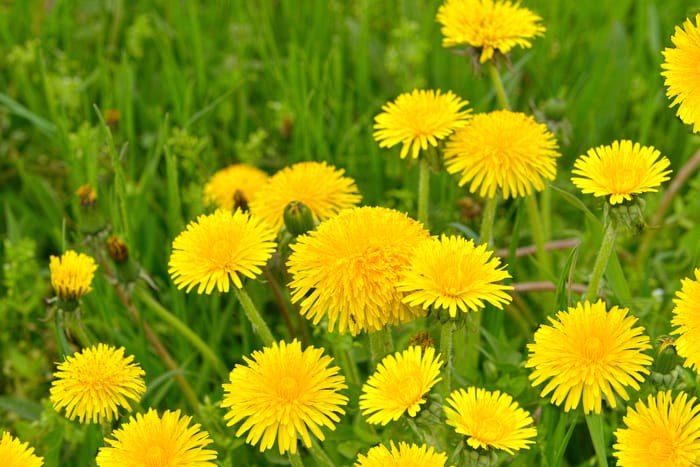
White clovers (Trifolium repens)
No doubt you’ve seen white clovers; they tend to pop up in grass when you leave them to grow. After my #NoMowMay I got a beautiful abundance of them!
Clovers are an amazing source of nectar for bees. If you can leave some on your lawn, you’ll be doing them a big favour. It has a long flowering season all the way from Spring until Autumn, so they are beneficial.
If you mow the lawn and get rid of a few, make sure you put them in the compost as they’re great for fertiliser.
I mow my lawn once a month (it grows way healthier this way), and I leave a little long patch, just a square of clovers and other widlflowers for the bees to enjoy.
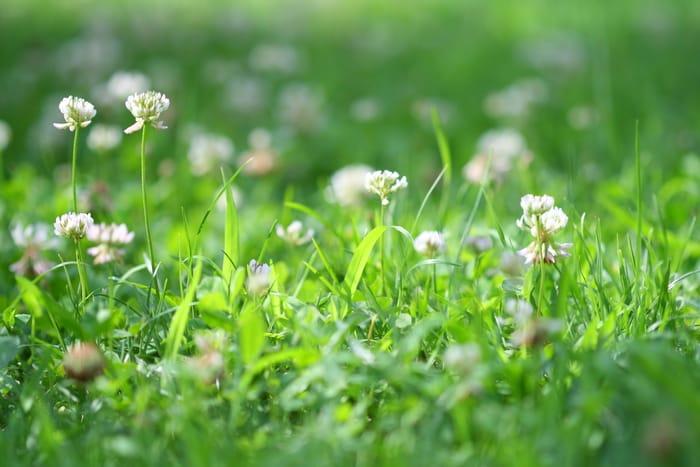
Rosebay Willowherb (Chamaenerion angustifolium)
You’ll find rosebay willowherb very commonly on vacant plots, waste ground, and motorways verges. It can grow what looks like out of nothing!
It’s tall with spikes of pink flowers, blooming all summer and is great for pollinators. Once you recognise it, it’s easy to spot.
They can get a bit dense. They produce fluffy seeds carried by the wind and create underground stems (rhizomes). So they do spread and are therefore not recommended for a small garden. But it’s shallow-rooted, so it is possible to control in a larger space.
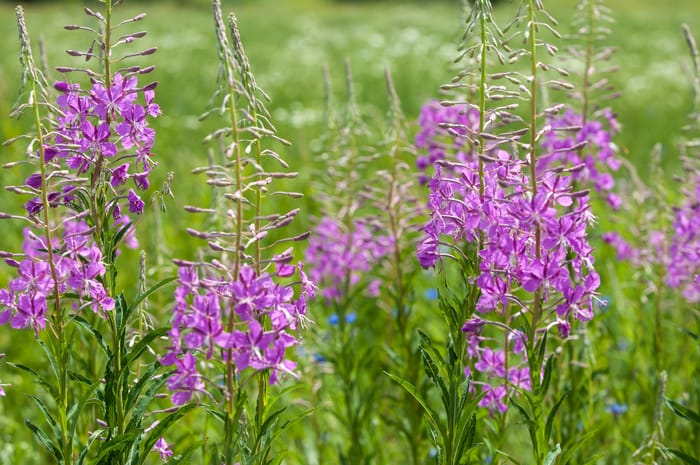
Common knapweed (Centaurea nigra)
Common Knapweed is a beautiful wildflower in the thistle family with a purple top, getting up to about 75cm tall. Generally, you’ll find it growing in sunny grassland areas and road verges. Bees and butterflies absolutely love it. And the seeds provide food for birds.
In a garden they are very low maintenance, no pruning required. But they do self-seed, so watch out if you want to tame them.
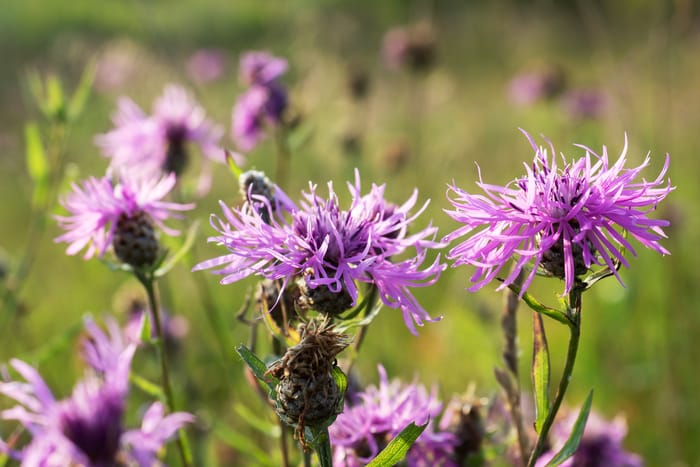
Ivy (Hedera helix)
Ivy is another plant that gets a bad reputation, but it supports 50 species of wildlife, according to the Woodland trust! It flowers late in the year, which is a great last feed for many pollinators. These then turn to berries, providing winter food for birds, including thrushes and blackbirds.
It’s evergreen, so great for covering an unsightly fence, and they don’t harm trees when they climb them.
It provides shelter for all kinds of insects and even bats.
They will spread and can live in most conditions. But you can control it easily by pruning or pulling up unwanted roots – it’s quite easy to keep on top of it.

Teasel (Dipsacus fullonum)
I like teasel, from a distance! You’ll recognise these easily once you get to know them, with their very tall prickly stems and large seed heads.
They are loved by bees when flowering, by birds (especially goldfinch) when seeding, and they keep their heads all winter, so this gives a great double benefit to wildlife.
They can work well in a garden and make an interesting cut dried flower too.
Although tall, they’re easy to maintain and won’t spread too much. You can collect a few seeds in the Autumn.
They’re a biennial, though, which means they’ll only flower in the second year if you grow from seed.

Common Foxglove (Digitalis purpurea)
In the wild, you’ll often find foxgloves in open woodland areas and hedgerows, and they can grow to 2M tall with stunning spikes of pinks and purples.
They are a favourite of bees, particularly the common carder bee with their long tongues.
Though Foxgloves are loved and hated by people, they are indeed poisonous if ingested, so generally, I keep them at the back of any spare patch I have. They look great at the back of borders and can thrive in the sun or shade.
They self sow seeds, so they can spread but are easy to maintain.
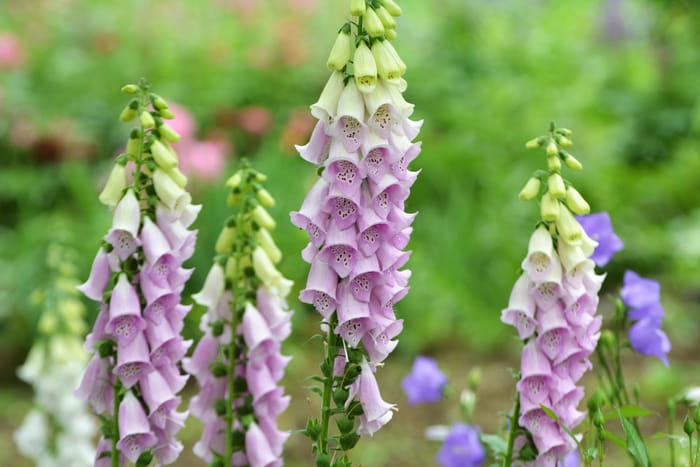
Herb Robert (Geranium robertianum)
Herb robert is a low lying flower with a red coloured stem. You’ll see their little masses of delicate pink blooms in the spring-summer. They are quite cute and pop up in quite a few areas, includes hedges, rocky areas and shady areas.
They’re also a foodplant for bees, butterflies and moths, including the barred carpet moth.
They will self-seed, so if you want to control them, they have extremely shallow roots and so are easy to pull up a few if they’re encroaching too far.
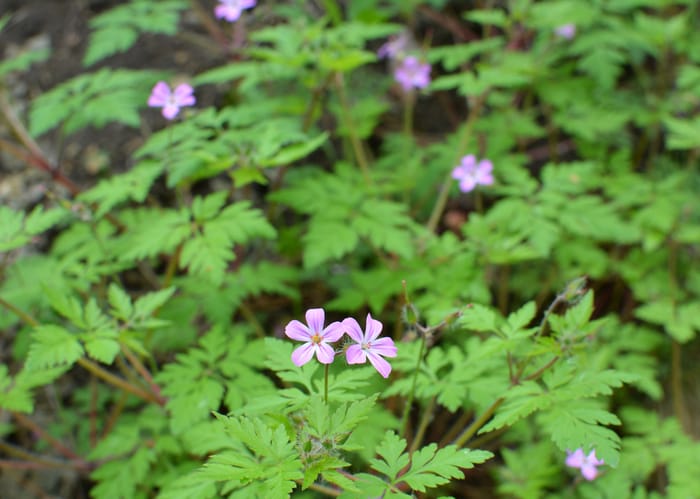
One weed we don't love!
Himalayan Balsam
There is one weed that is prolific at the moment and has been causing some debates on our Facebook page, and that’s Himalayan Balsam. Along with the government and all environmental groups and charities, we recommend never growing it and suggest even pulling it on sight. It is considered extremely invasive.
They thrive in damp areas, and you will undoubtedly see them along Wigan’s waterways and hedges. They have really taken over this year.
It is a non-native plant that can grow about 2M. It might look pretty and attract bees, but it grows so prolifically, it’s hard to control, and it blocks many other native plants from growing around it. They can produce up to 800 seeds per plant, and the seed heads shoot them out at quite some distance.
If you see it, you can go ‘balsam bashing‘. They are straightforward to pull up with shallow roots, and then you snap the stem near the base just to make sure. If it’s later in the year, look out for seed pods, you don’t want to spread them further, so I either stamp them right into tarmac (with no chance of survival) or cut off the seeds heads and pop them in a bag to in the bin.

Next time you see a messy hedgerow or an unkempt piece of land, have a look and see what you can identify. Can you work out what the plants are? Can you see any insects or wildlife etc making a home or having a feast?
If you would like more information on wildlife gardening, or want to keep up with more of our news, get in touch on either our Facebook page, Instagram, or email

[…] Try and reframe how you see weeds in the first place; you’ll save yourself some time and effort if you let them grow. We even wrote a blog post on weeds we love […]